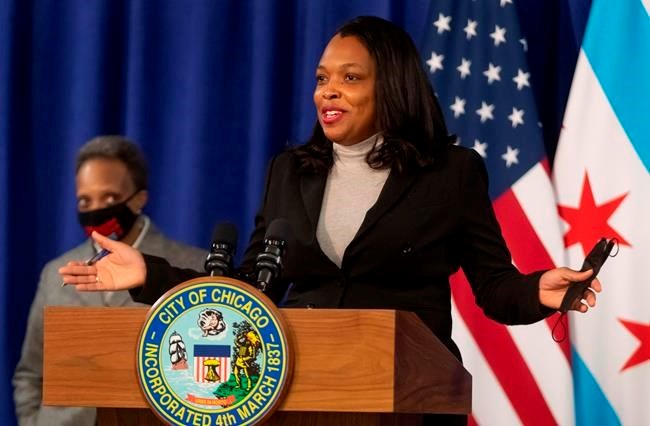CHICAGO — The Chicago Teachers Union has approved a deal with the nation’s third-largest school district to get students back to class during the coronavirus pandemic, union officials announced early Wednesday.
The vote, which closed before midnight, ends the possibility of an immediate teacher lockout or strike. The agreement follows months of negotiations with Chicago Public Schools, which had intensified in recent weeks, with plans that included more teacher vaccinations and metrics to allow school closures when COVID-19 infections spike.
The union said 13,681 members voted to approve the agreement and 6,585 voted against it. Despite the approval, the union characterized it as the “absolute limit to which CPS was willing to go at the bargaining table to guarantee a minimum number of guardrails for any semblance of safety in schools.”
Union President Jesse Sharkey also criticized the deal in an email to members that was released by the union, echoing previous arguments that the district's safety plans fell short.
“This plan is not what any of us deserve. Not us. Not our students. Not their families," the email said. "The fact that CPS could not delay reopening a few short weeks to ramp up vaccinations and preparations in schools is a disgrace.”
But in a statement, Mayor Lori Lightfoot and CPS CEO Janice Jackson defended the agreement, saying it “ensures families have options to choose in-person learning and make a plan that is best for them.”
Further, after weeks of pointing to $100 million that has been spent to make schools safe, Lightfoot and Jackson said the union vote “reaffirms the strength and fairness of our plan, which provides families and employees certainty about returning to schools and guarantees the best possible health and safety protocols.”
The back-and-forth echoed the bitter tone of months of debate over returning to classrooms after the district went fully remote last March. In recent weeks, Lightfoot warned teachers multiple times that they would be locked out of district systems if they didn’t report for duty and some teachers were punished. The union countered by threatening to strike, jeopardizing instruction for the roughly 340,000-student district.
District officials and Lightfoot argue remote instruction is leaving many behind, particularly Black and Hispanic students who make up the majority of the district. Union officials contend not enough students are interested in returning to fully staff more than 600 schools.
The first wave of students and staff, in pre-K and special education, is due back Thursday, with parents still having the option of remote learning. Roughly 3,200 of those students briefly returned last month, but then stopped amid the escalating fight with the union, which voted to continue remote teaching and rejected the district’s plans.
Other students in K-8 will return in the coming weeks for two days a week of classroom instruction, with teachers returning before students. Students in K-5 would return March 1, with staff returning Feb. 22. Students in grades 6-8 would return March 8, with teachers returning March 1. No plans have been set for high school students, who will continue with online learning.
Just how many students will return to school in the next few weeks is unknown.
Parent surveys in December showed about 77,000 students were interested in returning for limited in-person instruction. When classes briefly resumed last month for special education and pre-K students, attendance was roughly 19% of those eligible.
Ryan Griffin, 37, a parent of three boys, including a first grader who will return within weeks, said he was relieved there finally was a decision. But he said it was shameful the way both sides behaved. The lack of direction prompted him to help start the Chicago Parents Collective, which has hundreds of members citywide.
“They need to come together and work together,” he said of union and district leaders. “What is the point of striking a tentative agreement and then just amping up more rhetoric?”
Other parents said they’re not convinced that schools are safe enough to send their children back.
Joseph William has five children ranging in age from 6 to 14 who attend city schools. He said he was happy there was an agreement because it will help parents who can’t afford financially to stay home with their children any longer. But he wasn’t ready to send his own children.
“No matter how they’ve tried to convince us, they put all this stuff in the schools to make them safe, we don’t feel they’re safe yet,” he said. “In Black and brown communities on the West Side and the South Side, some schools were not safe before the pandemic and now they’re all safe? This is not a chance I’m willing to take with my babies.”
___
Follow Sophia Tareen on Twitter: https://twitter.com/sophiatareen
Don Babwin And Sophia Tareen, The Associated Press



